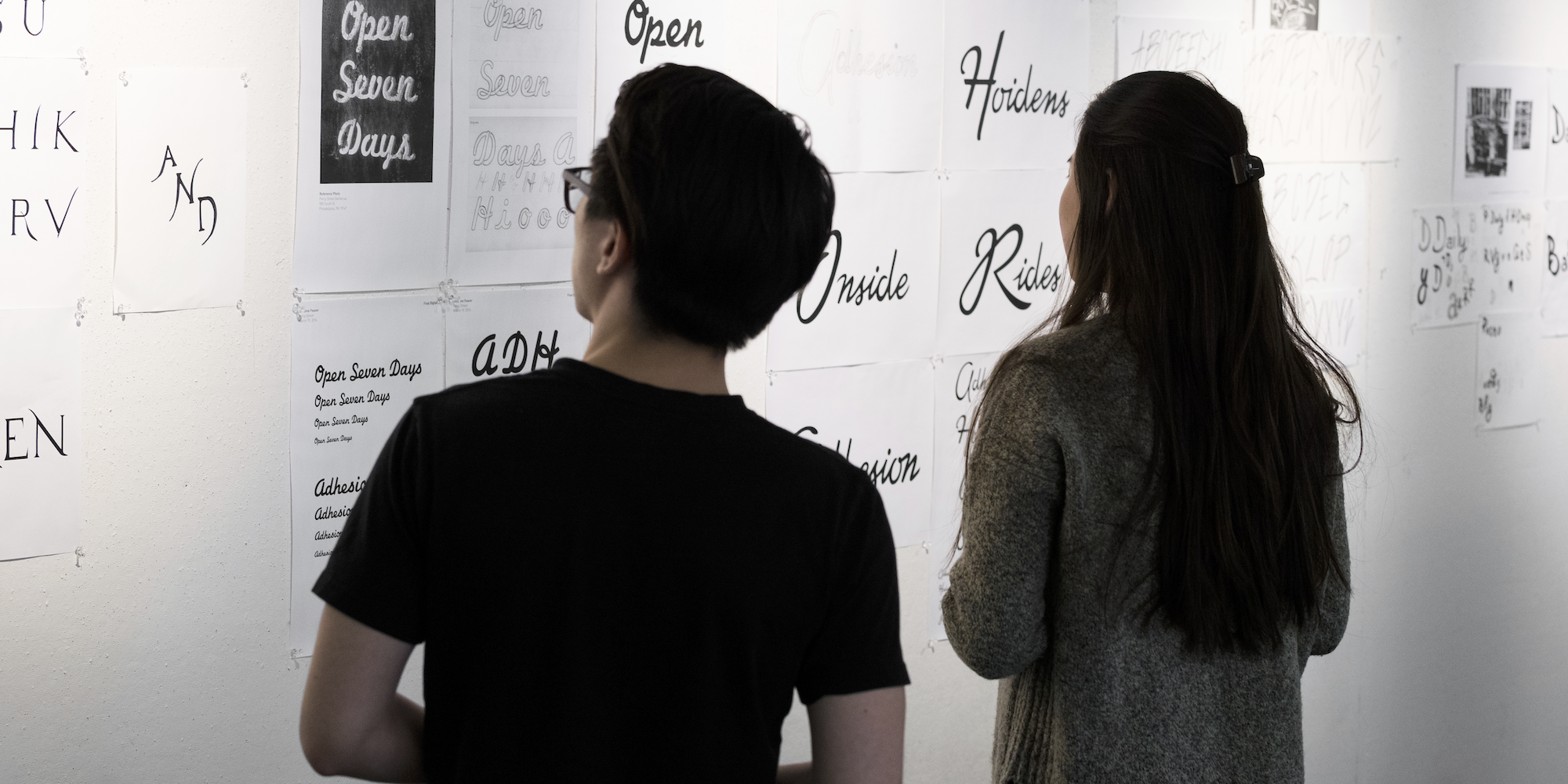
Angela Riechers, Program Director
ariechers@uarts.edu
215.717.6226
C O N T E N T S
Application
Learn more and apply to the Graphic Design program.
Description
The UArts Graphic Design program offers a wide view of what a graphic designer can and should be in today’s world, and prepares students for employment in fields including interactivity, branding, editorial, environmental design, and more. Coursework fosters the development of well-informed design processes and problem-solving strategies for all forms of visual communication. Our robust curriculum based upon critical thinking, creativity, design theory, technique, and history balances experimental with practical concerns to equip graduates for success as professional designers. Starting with the first-year School of Design Core experience, tailored to prepare students with a solid knowledge base for rigorous design studies in years two through four, the program emphasizes formal aesthetic, theoretical, and analytical knowledge along with intense exploration of today’s rapidly evolving media landscape. The program is cross-disciplinary, collaborating with other programs at the University and local arts organizations, non-profits, and social agencies as well.
UArts Graphic Design graduates creatively analyze what they see; speak and write eloquently about design; develop meaningful concepts; and generate compelling design narratives and solutions. They also know their way around the business side of the design profession as well: how to promote themselves and their work, and how to land jobs that will excite, challenge, and nurture them throughout their careers.
Program Objectives
1. Create visual responses to communication problems, including understanding of visual hierarchy, typography, aesthetics, composition and construction of meaningful images;
2. Use critical thinking to define problem parameters and to research, analyze, prototype, test and evaluate potential solution outcomes;
3. Construct innovative design systems for sustainable products, strategies and practices;
4. Utilize a variety of tools, technology and emerging mediums and methods in their work;
5. Leverage study, experiences and collaborative opportunities outside the discipline to further individual practice and professional development as a designer;
6. Prepare for creative practice by using cognitive, cultural and human factors to shape and inform design decisions that address diverse users, audiences and business/organizational operations.
Program Requirements (120 credits)